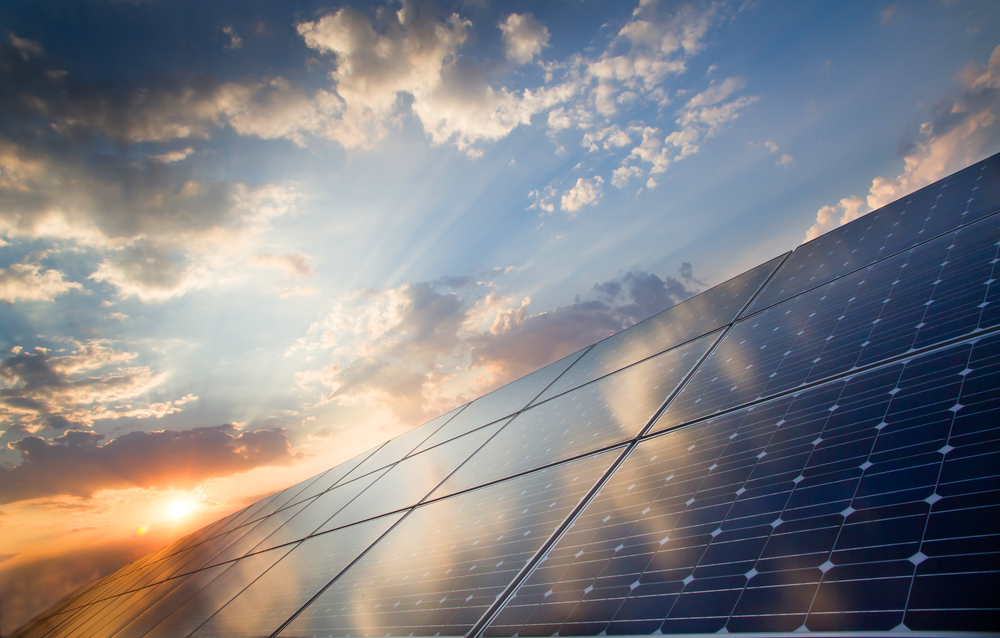Buying Solar Panels on a Budget
4 Cost Effective Solar Panels
Clean and efficient electricity can be produced by tapping sunlight particles by use of solar panels. Once installed, solar panels will produce environment-friendly electricity that can be used to run all the conceivable functions in the home.
The ability to harness the sun’s energy to meet our electricity needs is growing tremendously, with the demand for solar panels rising. The following are four key tips that you should take into account, once you settle on Installing Solar Panels on a Budget.

How Do Solar Panels Work?
When sunlight hits the solar panel, the sunlight’s energy is converted into Direct Current (DC). The DC is directed to an inverter which then turns it into Alternating Current (AC). AC is readily usable in the home for cooking, lighting and other functions.
However, should it happen that all the electricity so produced is not immediately needed in your home, the excess electricity id re-channelled to the grid and redistributed to other homes that might need it in the neighborhood. At night, when there is no sunlight, the grid provides households with electricity that they require.
What are the Benefits of solar?
Using solar energy has immense benefits. These include:
It is environmentally friendly
Solar panels provide the home with clean environment-friendly energy. This energy is free from harmful ozone depleting gases that are responsible for global warming. In addition, whereas the reserves of fossil fuels fluctuate with continued use, solar energy is renewable and it does not pose the danger of exhausting the earth’s natural resources. The Australian Government is serious about solar and has a range of energy policies in place.
It is dependable
All you need to harness solar energy is a solar unit and you are good to go. A home in an area that receives an average of 5 to 6 hours of sunlight per day is likely to generate more solar energy than it can consume per day.
They may have to trade the extra with the utility. Indeed, even in areas that are characterized by cloudy weather and diminished sunlight, the solar panels still come through and generate sufficient power for the home use. You can therefore expect to reliably use solar energy all year round.
Solar energy means less costs
Solar panels will save you the utility bills in the home. In summer, when the temperatures are soaring, the solar panels conveniently absorb the sun’s rays and prevent them from hitting the roof. This means that the interior of the house will be cooler, saving you the costs associated with the heavy use of air conditioners.
Conversely, solar energy will save you the cost of electricity bills because it is essentially free to trap from the sun. Traditional sources of energy are more costly because you have to factor in the production and distribution costs. Their costs are also often inconsistent due to common fluctuation in the cost of raw materials.
What are the Different types of the Cheapest Solar Panels?
The prices of solar panels are usually given as cost per watt. This can be a good guide when comparing the different offers in the market. Below is a quick look at 4 of the cheapest types of solar panels:
- The TP660P-235 Model manufactured by Talesun. Its power output is 235W and it sells for $183.30. This translates to $0.75 per watt
- The E156P/60-240BB Model from Eoplly. It has an output of 240W and goes for $213.60, translating to $0.89 per watt.
- The MPV285 model manufactured by Suniva has an output of $262.20. This translates to $0.92 per watt.
- The ECO230S156P-60 made by EcoSolargy has an output of 230W and costs $227.70. Its cost/watt ratio is $0.99.
It is noteworthy that the above prices cover wholesale terms only. For piece by piece purchase, add about 15% of the price.
What are the Installation Costs of Solar Panels?
Market experts are of the opinion that most average households in the US use power at an average rate of 1kWh. This means that each household would use about 730kWh of electricity for the 730 hours there are in a month. Each kW generated requires around 100 square feet of panels.
If an area were to receive up to 24 hours of sunlight per day, the 100 square feet of solar panels would be sufficient to generate the power required for a household. Unfortunately, the sun only appears at a limited period during a 24-hour span. This period varies with the geographical location of a place and the season.
It is therefore important for you to seek expert advice on the appropriate solar panels needed for your location. Installation costs largely depend on the type of system you want installed. However, it is generally agreed that the cost is an average of $8 per watt. A 5kW solar system would be expected to generally cost around $30,000.
However, a more accurate quotation can be obtained by contacting a reputable professional firm. Find out about the incentives and subsidies on offer from the utility company as this could save you a tidy sum. You can learn more about buying solar from the Victorian Consumer Affairs website.
It is an indisputable fact that solar power will be one of the main sources of energy in the future. The fact that it is clean, friendly, renewable and affordable has made it a favorite of many.
Millions of dollars are being invested to advance the technology of harnessing this type of energy. Installing Solar Panels on a Budget is one way of keeping up with the times. Consider the above four tips as a guide on how to go about this.
